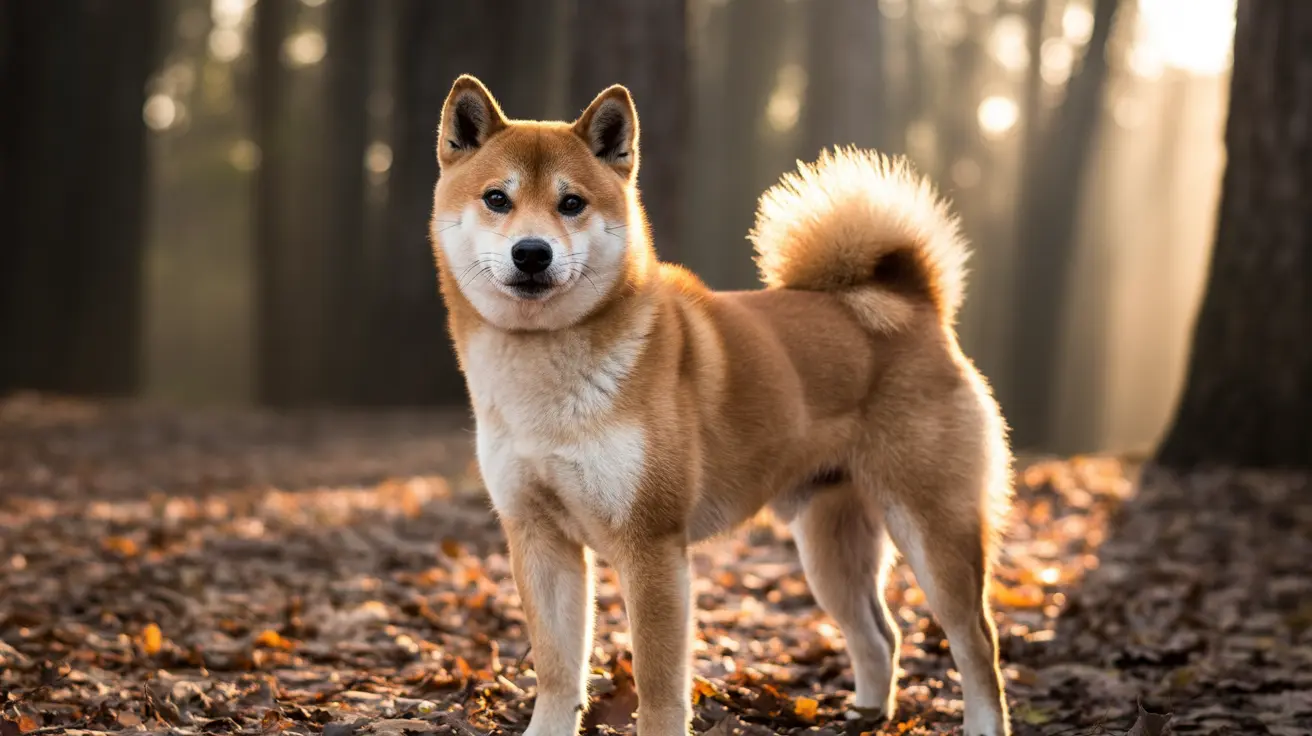Ever wondered which modern dog breeds share the closest genetic ties to their wild wolf ancestors? While many people assume wolf-like appearance indicates close genetic relationships, recent DNA studies have revealed some unexpected findings about which breeds are truly closest to wolves.
Modern genetic research shows that several ancient dog lineages, particularly those from Asia and the Arctic regions, maintain closer genomic similarities to gray wolves than most contemporary breeds. Let's explore these fascinating connections and discover which breeds scientists have identified as being most closely related to wolves.
Ancient Asian Breeds Lead the Pack
Among all dog breeds studied, ancient Asian breeds consistently rank among those showing the strongest genetic links to wolves. The Shiba Inu and Chow Chow, in particular, stand out in numerous genetic studies as being among the least diverged from their wolf ancestors.
These breeds have maintained their genetic proximity to wolves largely because they underwent less intensive breeding modification during the creation of modern dog breeds in 19th-century Europe. Their ancient lineages have preserved many original genetic markers that other breeds have lost over time.
Arctic Breeds: Preserving Wolf-like Genetics
Several Arctic breeds, including the Siberian Husky and Samoyed, also show remarkable genetic closeness to wolves. These working dogs developed in isolated northern regions, helping them retain many primitive genetic traits. Their adaptation to harsh Arctic environments has preserved genetic patterns that link them more closely to ancestral wolf populations.
The Alaskan Malamute joins this group of Arctic breeds with strong wolf affiliations, though it's important to note that their wolf-like appearance isn't necessarily what makes them genetically close to wolves.
Surprising Contenders: Small Breeds with Strong Wolf Links
Perhaps the most unexpected discovery from genetic research is that several small companion breeds show surprisingly close genetic relationships to wolves. The Shih Tzu, Pekingese, and Lhasa Apso – despite their diminutive size and distinctly un-wolf-like appearance – are frequently listed among breeds with strong genetic links to wolves.
This finding challenges our assumptions about what makes a breed "wolf-like" and demonstrates that physical appearance can be misleading when it comes to genetic relationships.
Ancient Hunting Breeds
Several ancient hunting breeds also maintain closer genetic ties to wolves than many modern breeds. The Basenji, often called the "barkless dog" of Africa, and sighthounds like the Afghan Hound and Saluki, consistently appear in genetic studies as being among the least diverged from wolves.
Understanding Wolf-Dog Genetics
While all dogs share approximately 99.9% of their DNA with wolves, the subtle differences in that remaining 0.1% tell us much about each breed's evolutionary history. The breeds mentioned above have retained more wolf-like genetic markers due to their ancient origins and relatively limited modification by modern breeding practices.
Frequently Asked Questions
What dog breeds are genetically closest to wolves?
Studies consistently show that ancient Asian breeds like the Shiba Inu and Chow Chow, Arctic breeds like the Siberian Husky and Samoyed, and surprisingly, some Asian companion breeds like the Shih Tzu rank among the closest to wolves genetically.
Why do some small dog breeds like Shih Tzu share close DNA with wolves despite not looking like them?
This is because genetic similarity isn't related to physical appearance. These ancient Asian breeds retained many original dog genetic markers due to their early domestication and limited crossbreeding during modern breed development.
How similar is the Siberian Husky's DNA to that of a gray wolf?
While Huskies share the same approximate 99.9% DNA similarity with wolves as all dogs do, they retain more wolf-like genetic markers than many other breeds due to their ancient Arctic origins and relatively limited breeding modification.
Can a dog breed look very wolf-like without having close genetic ties to wolves?
Yes, absolutely. Physical appearance can be misleading when it comes to genetic relationships. Some breeds were deliberately bred to look wolf-like, but this doesn't necessarily indicate closer genetic ties to wolves.
What traits do ancient breeds like the Shiba Inu and Chow Chow share with wolves?
These breeds often exhibit primitive behavioral traits such as high prey drive, independence, and strong territorial instincts. However, these characteristics are more related to their ancient breeding history than direct wolf ancestry.






